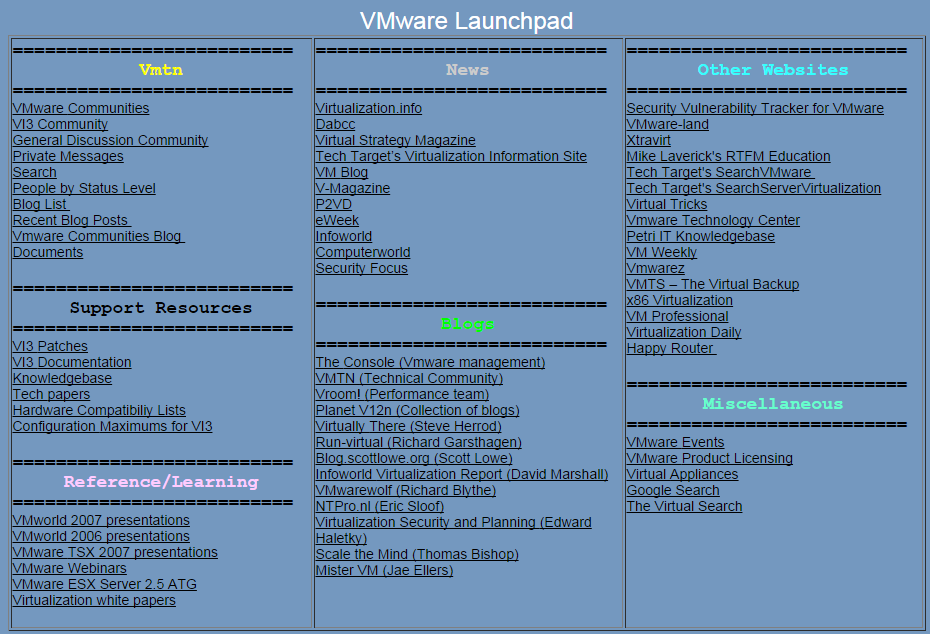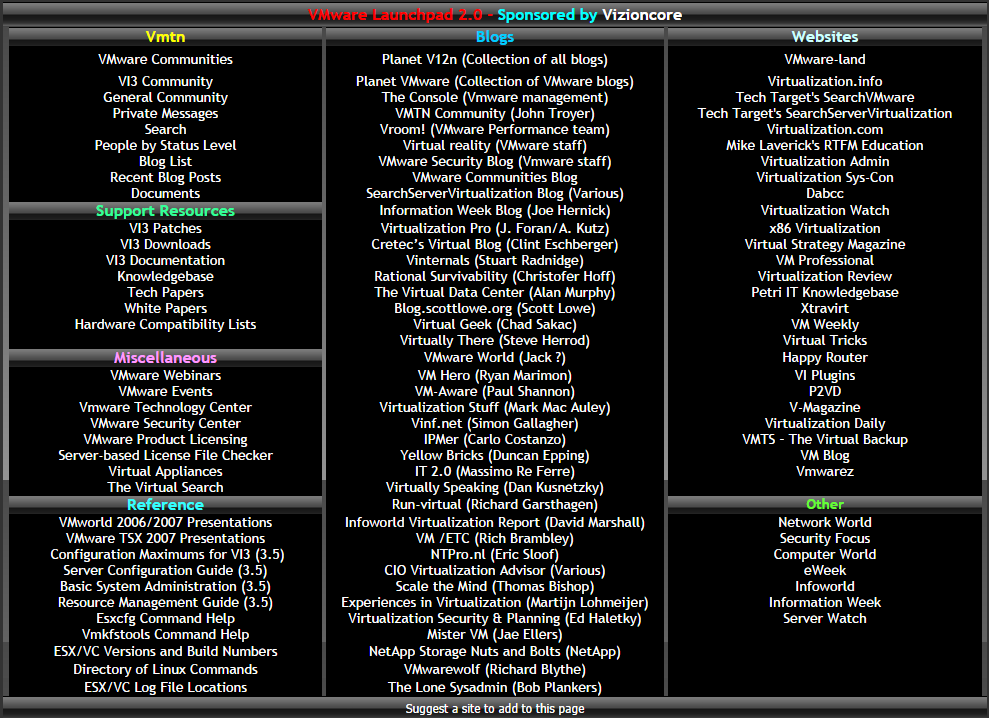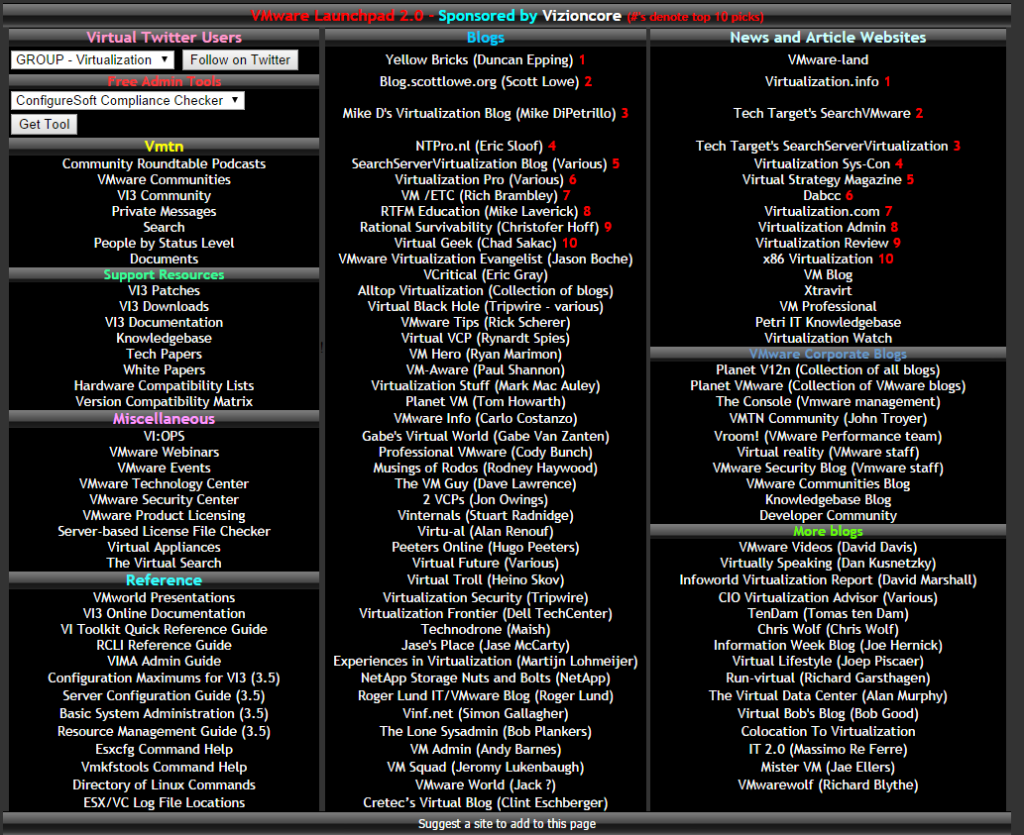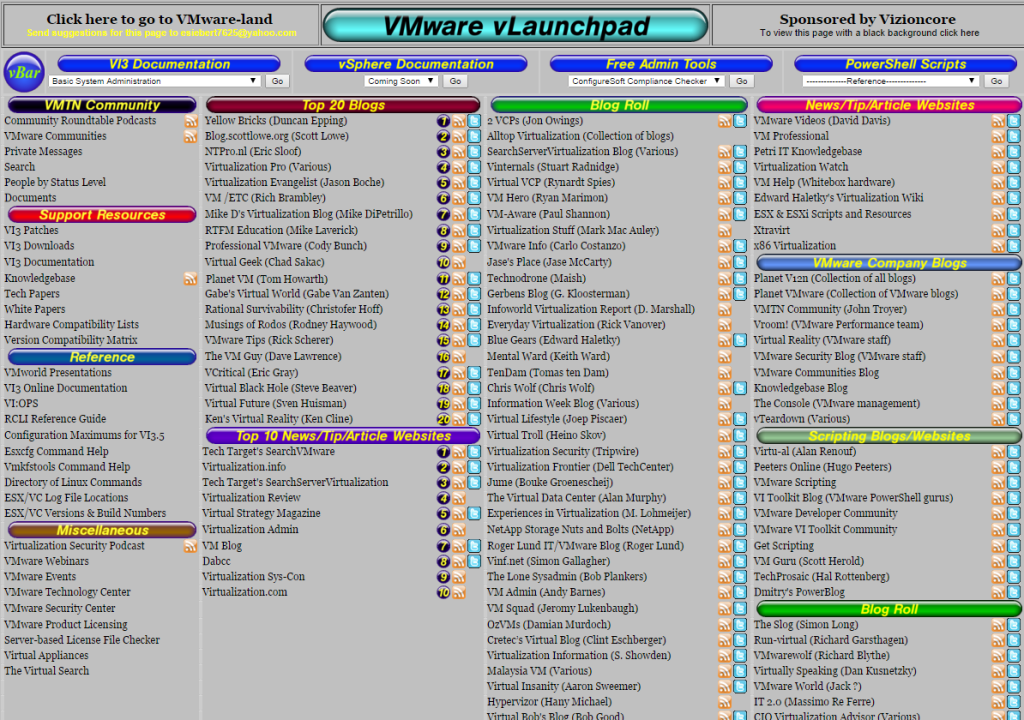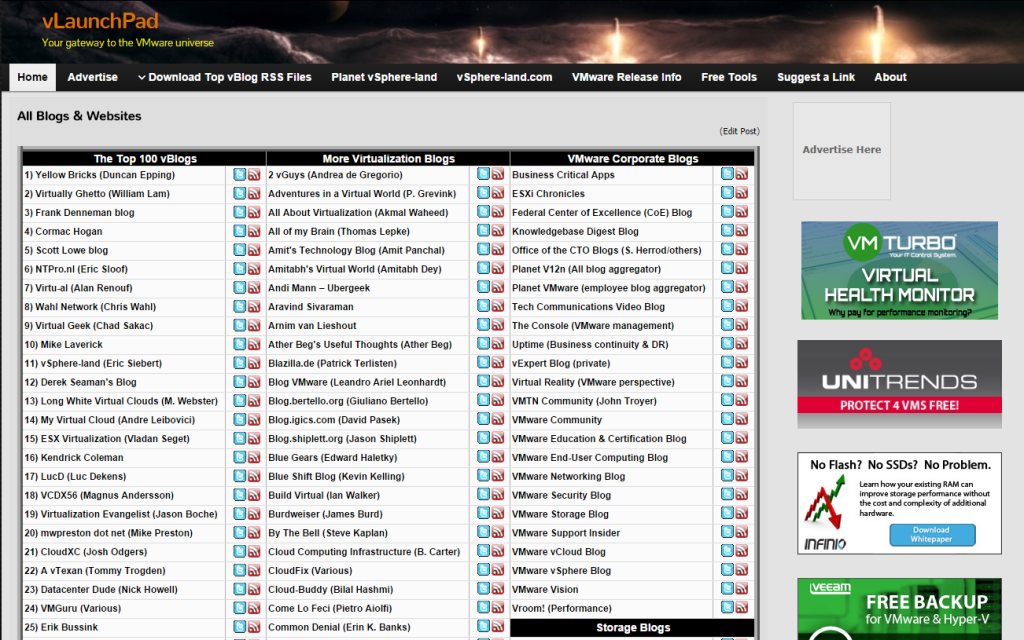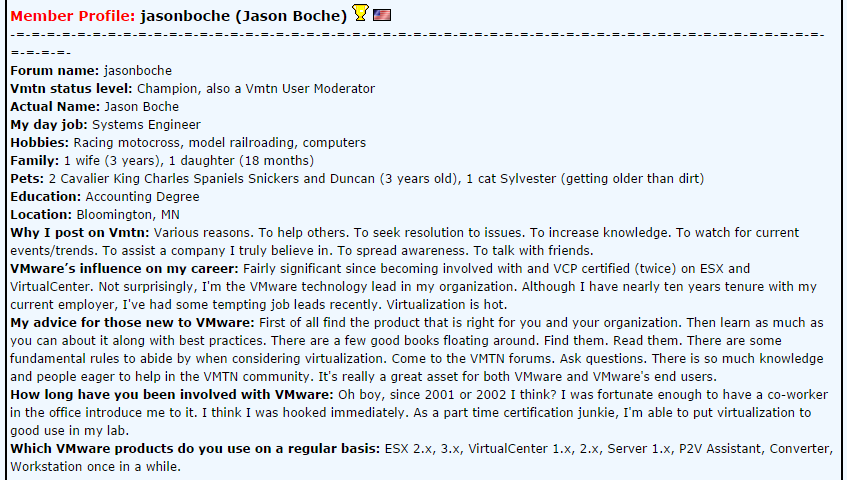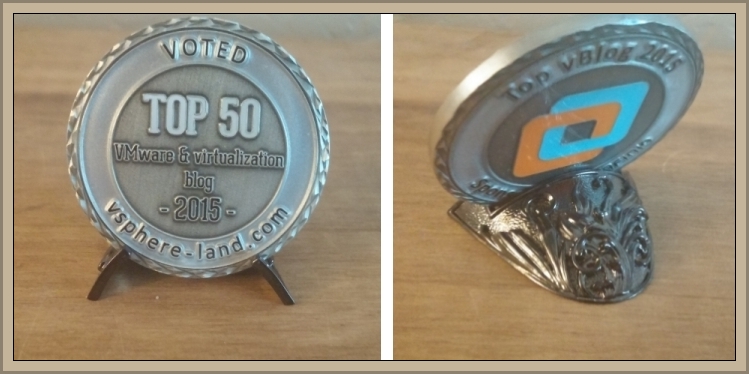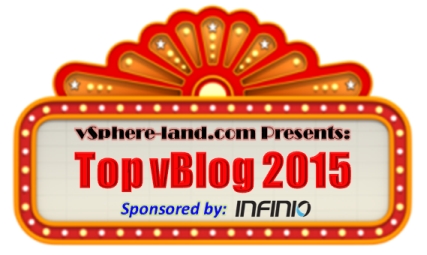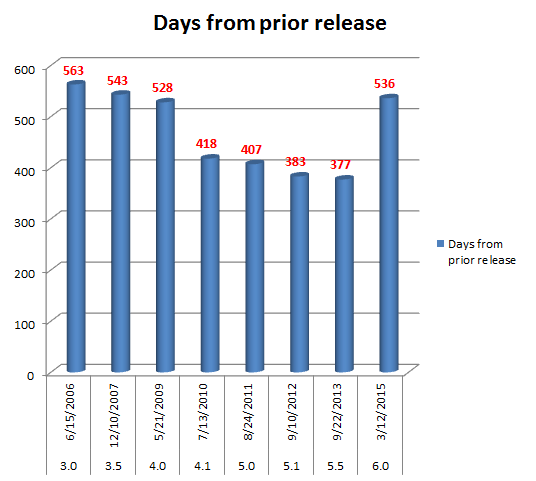I recently dug into some of my website design archives and came across many version of how the vLaunchpad has grown and evolved over the last 8 years. Because is contains links to all the blogs out there this time capsule serves to illustrate how bloggers have evolved and gorwn over the years. The earliest version of the vLaunchpad had very few blogs listed as ther ejust wasn’t many people bloggin back then. Over the years that has steadily grown as the current version of the vLaunchpad has over 400 active blogs listed on it.
Category: News
Mar 17 2015
VMTN wayback machine – spotlight on Jason Boche
Years and years ago on my old vmware-land.com website I had a page devoted to shining the spotlight on very active and influential members of the VMTN community so we could find out more about them. I thought I’d resurrect some of those spotlights and give you a glimpse back into the early days of the VMTN community. Today’s wayback machine spotlight is on Jason Boche:
Mar 17 2015
NFS 4.1 support in vSphere limitations and caveats
vSphere 6 finally bumped the version of NFS that was supported as a datastore from v3 to v4.1. NFS v4.1 is certainly not new having been introduced in 2010 but VMware has never seen to support v4.1 until vSphere 6. As expected NFS v4.1 brings a number of enhancements over v3 including support for multi-pathing and Kerberos authentication (AD) but there are a number of caveats and limitations with using it in vSphere 6 that you should be aware of:
- You cannot use Virtual Volumes (VVOLs) with NFS v4.1
- NFS 4.1 does not support hardware acceleration (VAAI) as a result you cannot create thick virtual disks on NFS v4.1 datastores (thin only) or use any of the VAAI-NAS primitives (i.e. Fast File Clone)
- According to the vSphere 6 Storage documentation on page 151, NFS 4.1 does not support the Fault Tolerance (FT) availability feature in vSphere, however on page 153 of that same documentation (see chart below) it is listed as supported. VMware needs to clarify this contradiction in their documentation.
[important]
Update from Cormac on this:
VMs on NFS v4.1 support FT, as long as it is the new FT mechanism introduced in 6.0.
VMs running on NFS v4.1 do not support the old, legacy FT mechanism.
In vSphere 6.0, the newer Fault Tolerance mechanism can accommodate symmetric multiprocessor (SMP) virtual machines with up to four vCPUs. Earlier versions of vSphere used a different technology for Fault Tolerance (now known as legacy FT), with different requirements and characteristics (including a limitation of single vCPUs for legacy FT VMs).
[/important]
- You cannot use v3 and v4.1 NFS versions to mount the same datastore as they do not use the same locking protocol and doing this cause data corruption
- NFS v3 and NFS v4.1 datastores can coexist on the same host
- Just like you can’t upgrade from VMFS3 to VMFS 5, you cannot upgrade an existing NFS v3 datastore to v4.1
- Be aware that vSphere 6 supports both NFS v3 and v4.1 but to do this ESXi has to use different NFS clients
- NFS v4.1 provides multipathing (pNFS) and you can use multiple IP addresses to access a single NFS volume
Below is a feature comparison chart that shows what vSphere features are not supported with NFS v4.1:
For more information on implementing NFS v4.1 read through the vSphere 6 Storage Documentation.
Mar 16 2015
Videos to help you learn about VMware Virtual Volumes (VVOLs) concepts and architecture
VMware has published two short videos that go over the concepts and architecture related to their new Virtual Volumes (VVOLs) storage architecture in vSphere 6. After you are done checking them out head on over to my Virtual Volumes link page for a lot more content on VVOLs.
Mar 16 2015
Bloggers get some free bling for your Top vBlog 2015 commemorative coin
Any blogger that tweets to promote this post with the hashtag #SupportvSphereland and makes the top 50 will receive a cool metal coin stand courtesy of me so they can proudly display their commemorative coin on their desk. You can use the below button to easily tweet this.
Mar 16 2015
Check out these great companies that support vSphere-land and Top vBlog 2015
Maintaining this site and my vLaunchpad as well as executing Top vBlog each year is very time-consuming. In return I would ask that you take a moment and learn a bit about my great sponsors that support me and make this all possible. Below check the latest news and events from my sponsors and be sure and give them a follow on Twitter so you stay up to date on what they are doing.
[important]Any blogger that tweets this post with the hashtag #SupportvSphereland and makes the top 50 will receive a cool metal coin stand courtesy of me so they can proudly display their commemorative coin on their desk. You can use the below button to easily tweet this.[/important]
Tweet
In addition for anyone interesting in supporting this site I do have ad spots available.
Infinio
Follow @Infinio
Official sponsor of Top vBlog 2015. Learn how ESG, an integrated IT research, analysis, and strategy firm, conducted a detailed Economic Value Validation (EVV) analysis looking at the direct and indirect costs and benefits organizations should consider when evaluating a storage performance investment. Download the white paper now.
Turbonomic
Follow @VMTurbo
Join Turbonomic on March 17th at 1:30 PM EST for a webinar where you’ll hear from Christopher Pritchard, Director of Information Technology, how AMGH leverages VMTurbo’s Demand-Driven Control to minimize latency, assure performance, and maximize utilization in its virtual IT backbone – including holistic control of Cisco Unified Computing System (UCS), EMC VNX, and a suite of Dell compute and storage.
Veeam
Follow @Veeam
Learn how Veeam Availability Suite v8 bridges the availability gap by providing Availability for the Modern Data Center™, which delivers RPOs and RTOs (RTPO™) of < 15 minutes for ALL applications and data. Also checkout NEW Veeam® Endpoint Backup™ FREE which provides a simple and free solution for backing up Windows-based desktops and laptops.
SolarWinds
Follow @SolarWinds
Join Kong Yang and I on March 19th from 2PM-3PM CT for a webinar to help you understand what hyper-convergence is all about as it relates to virtualization and look at the factors that have resulted in us getting there and discuss the impact it has on how we implement, manage, and monitor our virtual infrastructures. Also check out this new white paper on hyper-convergence and the impact this latest virtualization trend has on the management of a virtual infrastructure.
Unitrends
Follow @Unitrends
What do Docker, Taylor Swift, and Protection have in common? Attend this webinar to understand why interest in Docker has exploded and what Unitrends will offer to offer unique and state-of-the-art unified protection for Docker just as we offer for VMware vSphere and Microsoft Hyper-V. One lucky attendee will win a ticket to DockerCon ($899 Value!!). Also checkout another webinar to learn about number of free tools that Unitrends offers ranging from free backup of VMware vSphere (even for the free/unlicensed ESXi version) and Microsoft Hyper-V to business continuity and disaster recovery planning services.
Bitdefender
Follow @Bitdefender_Ent
Check out the Business Insights blog that focuses on Virtualization and Cloud Security with authors such as Dave Shackleford who recently did a post entitled An Overview of Virtualization Security Guidance: Part I and also check out Part II. Bitdefender also did a joint solution brief with VMware entitled: Solution Brief: “Virtualization-centric Security for VMware Environments“. And finally another good white paper they published is entitled: “Evolve or Die: Security Adaptation in a Virtual World“.
Tintri
Follow @Tintri
Read Gartner’s 2014 Magic Quadrant for General-Purpose Disk Arrays report to understand the storage challenges ahead of you and find out why Tintri has been positioned as a Visionary in the space. Also sign-up for an upcoming webinar on March 31st at 9:00PDT entitled “Architecting for Successful VDI Design” where William Allred, Associate Director at the Sam M. Walton College of Business will share his experience with the expected (and unexpected) challenges of a VDI deployment. Also Patrick Carmichael, Sr. Systems Engineer at Tintri will share the most common VDI pitfalls and specific ideas for how they can be avoided.
Nutanix
Follow @Nutanix
Nutanix Welcomes You to the Inaugural .NEXT Conference, the only conference dedicated to the latest in enterprise datacenter technologies and architectures on June 8-10, 2015 at Fontainebleau Miami Beach. Register today! Be sure and checkout the Nutanix NEXT worldwide online community to facilitate a peer-to-peer exchange of ideas, best practices, and information about Nutanix and web-scale technologies, and the rapidly changing landscape of datacenter IT. Register for free to join the global conversation! Also don’t miss an episode of the Nutanix Next Community Podcast.
VCDX133
Follow @vcdx133
Be sure and check out all the great information on Rene Van Den Bedem’s (aka VCDX133) blog and give him a follow on Twitter.
Mar 15 2015
Last chance to vote for the Top vBlogs – voting closes on 3/16
Voting closes tomorrow (Monday) at the end of the day, over 2,000 people have voted so far from all across the world. Don’t miss your chance to vote and determine who the top vBloggers are.
Mar 14 2015
vSphere release cycle bounces back to the old VI3 days
Back in 2013 I did a post comparing number of days between major vSphere releases that highlighted VMware’s fast pace of delivering new vSphere versions. That fast pace has now slowed down considerably with vSphere 6.0 as VMware wasn’t able to keep up with the zippy one year cycle they had fallen into. Now with the release of vSphere 6.0 we’re back to around the same numbers of days that it was at years ago with VI3. One of the reasons for the delay was most likely due to the engineering of the new Virtual Volumes (VVOLs) storage architecture which took considerable time and effort to complete. Whether that will continue or not as yet to be seen, the next release of vSphere may not be as big as this one was. VMware now has many of their new architectural changes in place so they may speed up again based on the development efforts required for the next vSphere release.
ESX/ESXi version Release Date Days from prior release
2.5 11/29/2004 -
3.0 6/15/2006 563
3.5 12/10/2007 543
4.0 5/21/2009 528
4.1 7/13/2010 418
5.0 8/24/2011 407
5.1 9/10/2012 383
5.5 9/22/2013 377
6.0 3/12/2015 536


